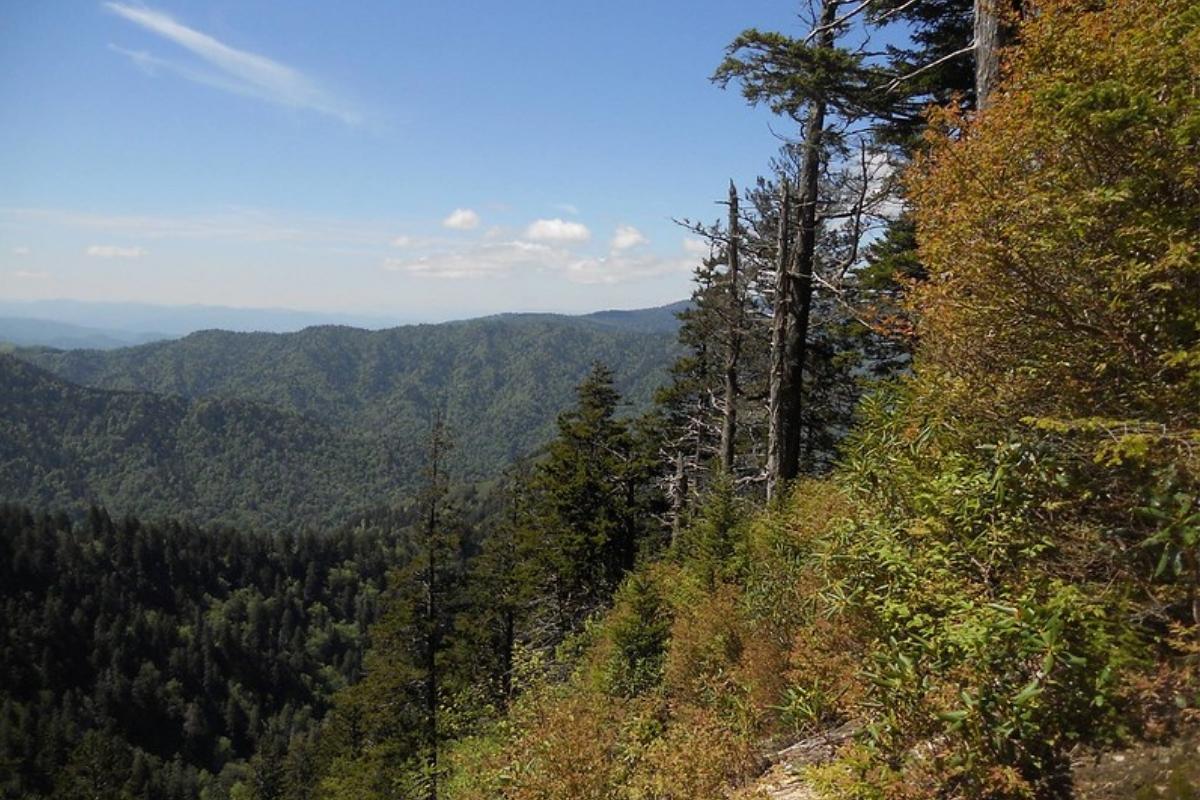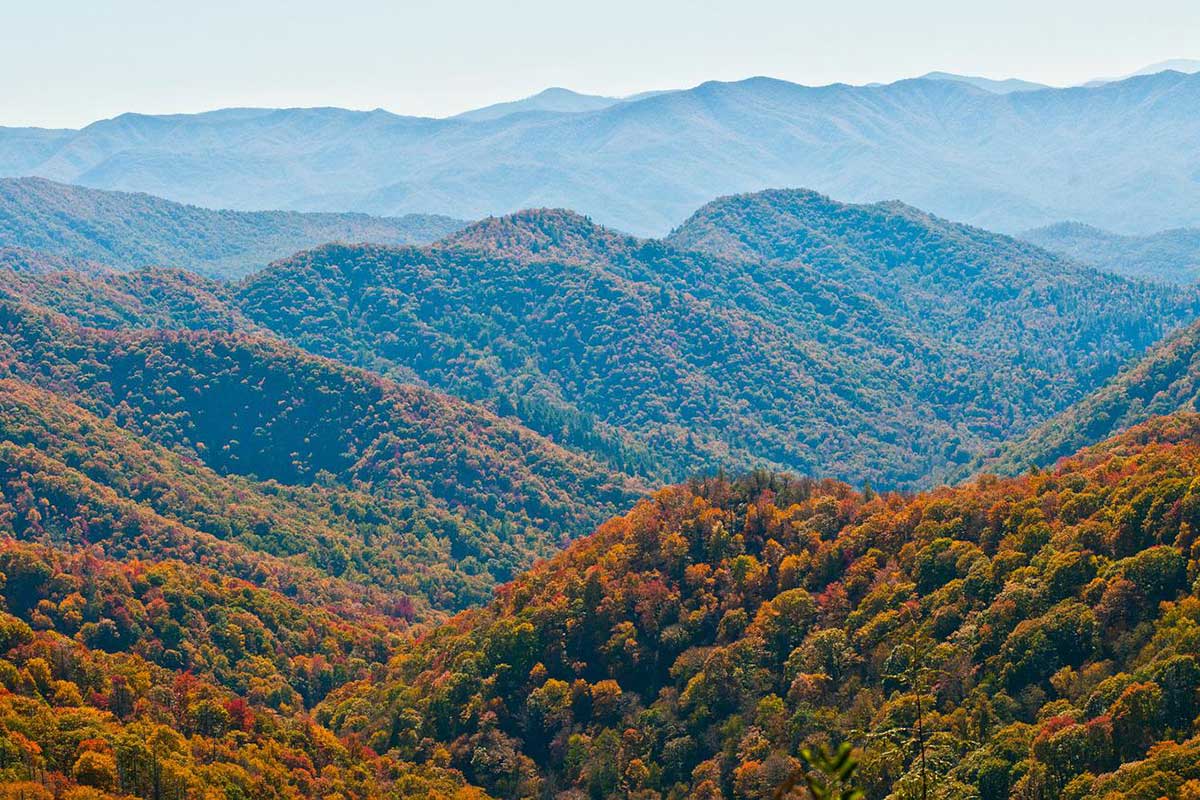Great Smoky Mountains National Park is definitely the National Park that I’ve been to more than any other, living in Tennessee. It’s also the most visited NP in the entire country, as you’ll find out in the article that’s full of facts about GSMNP.
Interesting Facts About The Great Smoky Mountains National Park

1. As the 19th largest national park in terms of size, the Great Smoky Mountains National Park covers 522,427 acres and is situated in both east Tennessee and western North Carolina.
2. The Smoky Mountains are between 200-300 million years old making them some of the oldest mountains in North America.
3. The park is known as the “salamander capital of the world” and is home to at least 30 different species including some species like the red-cheeked salamander that can only be found in the GSMNP. The 5 families of salamanders found in the park are Cryptobranchidae, Proteidae, Salamandridae, Ambystomatidae, and Plethodontidae.
4. The Smoky Mountains are a subrange of the Appalachian Mountains.
5. More than 71 miles of the Appalachian Trail run through Great Smoky Mountains National Park.
6. As of 2017, there are around 1500 black bears in GSMNP.
7. Clingmans Dome is the highest point in GSMNP at 6,643 feet. It’s also the highest point in the state of Tennessee.

8. GSMNP had over 11.4 million visitors in 2018 making it the most visited National Park in the United States by a landslide. The Grand Canyon was the second most visited National Park with under 6.4 million in the same year.
9. There are over 800 miles and 150 official hiking trails in the GSMNP.
10. The park was purchased by the U.S. government in the 1930s from a private land owner and a stipulation in the contract was that no fee shall ever be charged to enter the park. So entrance will always be free into the park making it one of the few parks in the U.S. with free admission.
11. Summer and fall are typically the busiest months to visit GSMNP so consider a winter or spring trip to avoid at least some of the crowds.
12. The “smoke” in the Smoky Mountains is actually fog that’s produced by the lush vegetation, typically after rain. With enough plant life producing this fog at once you get “smoky mountains”.

13. There are approximately 150 elk in the Cataloochee region of the park, located in North Carolina. They were reintroduced to the park in the early 2000s and are now breeding and growing the population.
14. Cades Cove and Clingman’s dome are two of the most visited spots in GSMNP.
15. The Mount LeConte Lodge was built in 1926 near the summit of Mt. Leconte and is accessible only by hiking trails. They still take guests but have no power, running water, or road access making for a very primitive and unique experience.

16. GSMNP has 1500 flowering plants growing in it, more than other U.S. national parks.
17. Over 90 historic buildings or structures have either been preserved or rehabilitated in the park.
18. Otters were hunted for their pelts in GSMNP to the point of local extinction in the 1930s. Thanks to conservation efforts by scientists, otters are making a comeback in areas of the park today.
19. The park has over 200,000 acres of old-growth forest, some of the trees are over 500 years old and 170 ft tall!
20. GSMNP has 10 campgrounds with 1000 campsites.

21. The park has over 2,000 miles of streams and tributaries.
22. There are 240 permanent and more than 80 seasonal employees of the park as well as over 2,600 volunteers.
23. In the park you’ll find 384 miles of roads, 238 paved, and 146 unpaved.

24. The park contacts over 100 backcountry campsites including shelters.
25. 19 species of fireflies live in the park, including Synchronous fireflies which are the only species in America that can synchronize their flashing light patterns.
26. At least 240 species of birds have been identified in the park, and half of those are known to breed within the park.
27. Species that were extirpated from the park include bison, elk, mountain lion, gray wolf, red wolf, fisher, river otter, Peregrine Falcon, as well as several species of fish. Some of these have been reintroduced to the park-like elk, river otter, and the Peregrine Falcon.

28. The Peregrine Falcon, known for the amazing speeds of over 200mph it can reach when in pursuit of prey has been successfully reintroduced to the park. They were once a federally endangered species and are still endangered in Tennessee, but are making a comeback in GSMNP.
29. There are 60 exotic invasive species of plants in GSMNP, and park employees work hard to keep them under control.
30. As of 2019 there are 9 endangered, 3 threatened, 4 extirpated, and 20 species listed as Federal Species of Concern. This includes both plants and animals.
